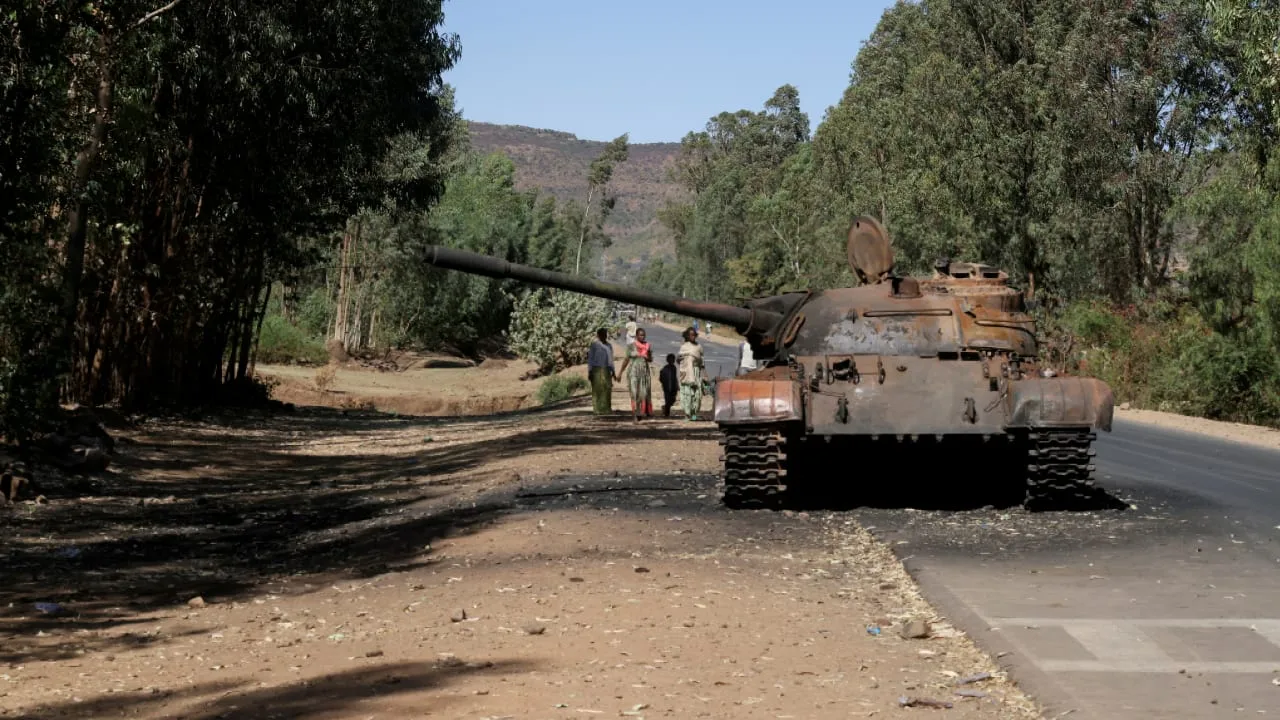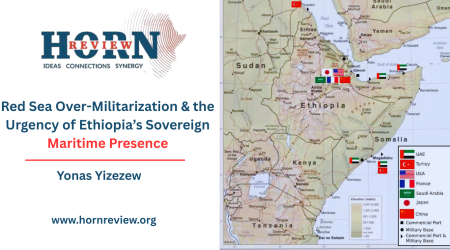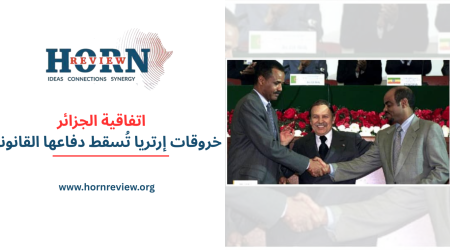
30
Jul
Youth, Unemployment and Extremism: The Silent Security Threat in Ethiopia
In recent years, Ethiopia has found itself entangled in multiple layers of crises from ethnic insurgencies and armed rebellions to geopolitical tension over sea access and internal political fragmentation. However, one of the most dangerous and less visible threats facing Ethiopia today is the explosive intersection of youth unemployment and violent extremism. While conflict dynamics often emphasize ethnic or political grievances, the structural condition of millions of unemployed, undereducated and disillusioned youth has created fertile ground for radicalization, organized violence and instability. This article offers a critical, subjective analysis of this silent security threat, exploring its drivers, manifestations and what Ethiopia must do to reverse the tide.
The Youth Bulge and Economic Despair
Ethiopia is a nation of youth. According to the Central Statistical Agency (CSA, 2021), over 70% of the population is under the age of 30. On the surface, this demographic structure holds immense potential for economic growth and innovation. However, this promise remains unfulfilled. The youth unemployment rate in Ethiopia stood at approximately 25.3% in urban areas as of 2022 (ILO, 2023). In rural areas, where labor is often informal or underpaid, unemployment figures may be masked but are no less dire.
The lack of opportunities is exacerbated by a mismatch between education and employable skills. Graduates with degrees in humanities or social sciences are often left jobless, while industries seek technically trained labor. The higher education system, plagued by poor quality and limited linkage to the labor market, fails to prepare young people for the economy they must survive in.
When Desperation Becomes Radicalization
Unemployment is not merely an economic issue; it is also profoundly psychological and social. Many young people, particularly men, see no viable future and turn to alternative identities that promise meaning, belonging and agency. Whether through ethnic militias, religious extremism or urban gang activity, radicalized youth are often not ideologically driven but rather economically abandoned.
The rise of armed youth groups in Amhara (Fano), Oromia (OLA) and other regions is not coincidental. These groups increasingly recruit unemployed youth with promises of income, protection and a cause to believe in. Similarly, the 2020s saw a spike in radicalized religious movements, some linked to foreign financing, which have attracted youth with both material incentives and ideological narratives of salvation or martyrdom (International Crisis Group, 2023).
On the other hand, the urban migration trend in Ethiopia further complicates the security landscape. As rural youth move to cities in search of opportunity, they are often met with overcrowded slums, joblessness and social exclusion. Addis Ababa, for example, has seen a spike in street gangs and informal settlements lacking basic services. This urban marginalization can lead to a sense of invisibility, resentment and ultimately rebellion.
Moreover, urban youth frequently become foot soldiers in political protests, sometimes manipulated by elite interests. As seen during the 2016–2020 waves of demonstrations in Oromia and Addis Ababa, unemployed youth were both the agents and victims of violent confrontations.
Political Manipulation and Ethnic Mobilization
In Ethiopia’s polarized political environment, youth are often tools of manipulation. Ethnic federalism has fragmented national identity, encouraging young people to see themselves first and foremost as members of ethnic groups. Political entrepreneurs exploit this identity, creating youth leagues, militia wings or online echo chambers that fuel division and violence.
The 2023 conflict in Amhara region illustrated how youth were mobilized under the banner of ethnic nationalism. Many of these recruits were neither soldiers nor activists before the crisis. They were young men without jobs, purpose or hope transformed into fighters by a political narrative that gave their suffering a target and a meaning (BBC Amharic, 2023).
Education System: A Breeding Ground for Frustration?
The Ethiopian education system, especially at the tertiary level, has expanded rapidly without corresponding investment in quality or employability. Universities churn out tens of thousands of graduates annually, most of who enter a job market already saturated and poorly diversified. The lack of practical skills, entrepreneurial training or mentorship programs leaves graduates disillusioned.
According to a 2022 study by the Ethiopian Development Research Institute (EDRI), over 65% of university graduates take more than two years to find stable employment. During this waiting period, many turn to informal economies, social media radicalization or simply give up. This academic-industrial gap is a national crisis masked as educational success.
Regional and Global Parallels
Ethiopia is not alone. Countries such as Nigeria, Somalia and Sudan have seen youth unemployment feed extremist movements like Boko Haram, Al-Shabaab, and Janjaweed. These cases underscore that when young people lose faith in formal systems, they become vulnerable to informal or violent alternatives.
Moreover, Ethiopia’s strategic position in the Horn of Africa makes it a target and conduit for transnational radical movements. There is a growing concern that extremist groups in neighboring regions may find a foothold through Ethiopia’s neglected and desperate youth population.
Social Media and Digital Extremism
Ethiopia’s youth are increasingly online, especially in urban areas. While the internet provides access to information and community, it also opens the door to radicalization. Platforms like Facebook, TikTok and Telegram have been used to spread hate speech, conspiracy theories and calls to violence. Often, these messages find their most receptive audience among unemployed youth with little media literacy or critical thinking training.
The government’s response… periodic internet shutdowns has done little to stop digital extremism and much to increase mistrust. Instead of censorship, Ethiopia needs a digital literacy strategy to immunize youth against online radicalization.
Policy Failures and Missed Opportunities
Government programs such as the Youth Revolving Fund, Micro and Small Enterprises (MSE) initiatives and Job Creation Commission efforts have largely failed to scale up or reach the most vulnerable. Corruption, poor implementation and political capture have rendered many of these programs ineffective.
There is also a lack of inter-agency coordination between education, labor and security sectors. Youth empowerment is treated as a development issue, not a peace and security priority. This siloed approach undermines the holistic response needed to prevent youth radicalization.
So, what Can Be Done?
Shift Policy Framing from Welfare to Security
Youth unemployment must be seen not just as a development issue, but as a national security emergency. This framing can unlock more strategic, urgent and coordinated responses.
Reform Education towards Employability
Technical and vocational education (TVET) must be prioritized and entrepreneurship embedded in secondary and tertiary curricula. Practical training, mentorship and business incubation must be mainstreamed into higher education.
Create National Civic Service Programs
Ethiopia needs a national youth service model that engages young people in community development, environmental work and national cohesion projects. This can provide both income and purpose.
Engage Religious and Cultural Institutions
Religious leaders remain powerful influencers in Ethiopian society. They must be engaged in youth peace-building and ethical education. Similarly, traditional elders can mentor youth toward non-violent conflict resolution.
Develop Digital Literacy and Counter-Extremism Campaigns
The government, in partnership with civil society, must launch sustained campaigns that educate youth on misinformation, hate speech and online radical recruitment tactics.
Support Youth-Led Peace-building
Rather than seeing youth as a problem, they must be partners. Youth-led organizations working on peace, media and social entrepreneurship must receive institutional support and funding.
Hence,
The convergence of youth unemployment and radical extremism is Ethiopia’s silent but most potent security threat. A nation that fails to educate, employ and empower its youth will inevitably find them on the streets, in militias or lost in despair. Ethiopia’s future depends not just on roads, ports or politics but on what kind of society it builds for its young. If ignored, this demographic dividend could become a demographic disaster. If embraced and invested in, Ethiopia’s youth could become the architects of a peaceful, prosperous future.
By Kidus Tesfaye, Researcher, Horn Review
References
- Central Statistical Agency (CSA). (2021). National Labor Force Survey Report.
- International Labour Organization (ILO). (2023). Ethiopia Youth Unemployment Overview.
- International Crisis Group. (2023). Ethiopia’s Ethnic Armed Movements and the Federal Government.
- Ethiopian Development Research Institute (EDRI). (2022). Graduate Employability and Labor Market Mismatch.
- BBC Amharic. (2023). “የፋኖ እና የመንግስት ውጊያ: የአዲስ ወጣቶች ማስተላለፊያ የመሆን አደጋ.”










